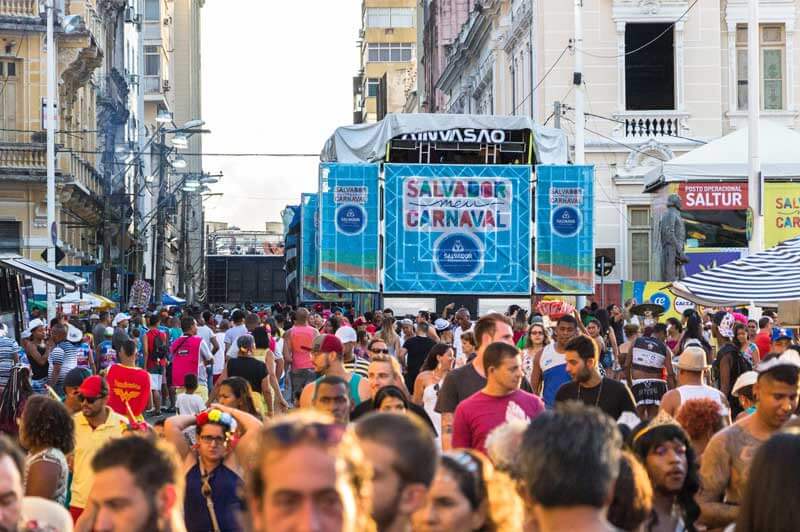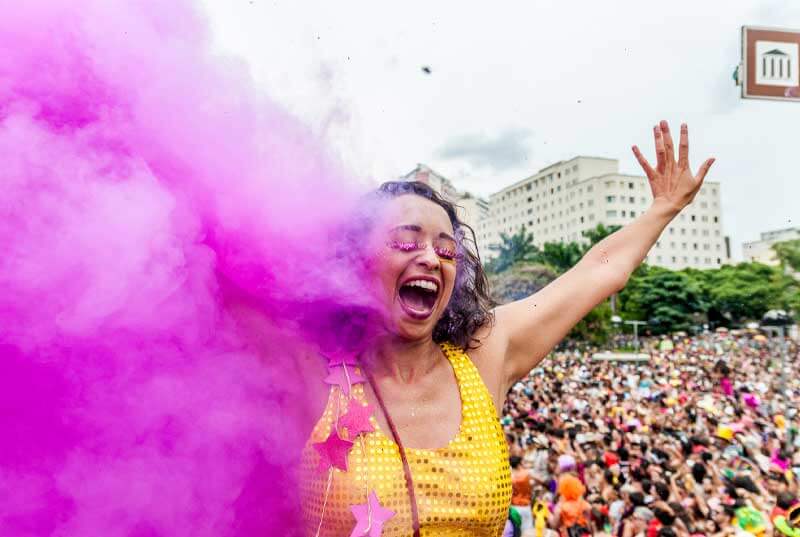Though travellers can experience Carnival in many cities and towns around the world, most notably in Latin America and Europe, there’s no place more synonymous with its celebration than Brazil. Carnival is such an integral part of Brazilian cultural heritage that anticipation and preparations at times begin a year in advance. There’s even a saying among Brazilians that jokingly sums up the way things come to a halt during Carnival season: “O ano só começa depois do carnaval (the year only begins after Carnival)!”
With its roots in Christianity, Carnival lasts about 5 or 6 days, starting on the Friday or Saturday before Lent and wrapping up on Ash Wednesday. If you’re planning on participating in Carnival in Brazil, plan your travels around late February or early March, depending on when Easter falls that year. Once you’re there, you’ll find that the actual length of celebrations will differ from town to town—in other words, how long the locals want to keep the party going for!
Understanding Brazil’s Carnival

If people think of ‘Carnival’ when they think of Brazil, then they almost certainly think of ‘Rio de Janeiro’ when they think of Carnival. The images or footage we often see—grandiose displays of colourful, elaborate costumes, painstakingly decorated floats and venues, the contagious atmosphere of revelry uniting the crowds, may be recognizably Rio, but it’s certainly not unique to Rio.
It’s important to remember there are many other places in Brazil that celebrate and represent Carnival in ways that uphold their own special traditions. And although religious elements first brought over by Portuguese colonizers in the 16th century may have been lost over time, many Carnivals now bear the influence of the country’s unique Afro-Brazilian culture.
3 Carnival destinations in Brazil (that aren’t Rio)
Here are a few such places that have their own takes on Carnival—perhaps with a little less of the extravagance of Rio, but with just as much excitement and energy and, some would even argue, a bit more authenticity.
Recife & Olinda


Salvador

Minas Gerais

Preparing for your trip to Brazil
A little planning goes a long way in helping you make the most of your trip to Brazil. Be sure to check off these tasks some time before your departure:
- Apply for an eVisa: while Brazil isn’t one of the visa-free destinations that travellers can visit with just a Canadian passport, that shouldn’t stop you from going. Both American and Canadian citizens can easily apply to stay as visitors for up to 90 days.
- Consider keeping up-to-date with your travel vaccinations, such as routine travel vaccines, or Hepatitis A, B, influenza, measles and others.
- Check for any travel advisories issued by the Government of Canada. As with travel to any country, it’s good practice to check health and safety updates. Petty crime is quite common, and exercising common sense and vigilance is a must, especially at large-scale celebrations like Carnival.
- Get Emergency Medical travel insurance to cover you for unexpected medical emergencies. For even more coverage, look into Trip Cancellation & Trip Interruption, and optional Baggage Insurance.

Brazil is an enormous, special place that can’t be fairly summarized in just a few words. But if you had to pick just one festival in the world that best encapsulated an entire country’s rich culture and its proud, celebratory spirit, it would have to be the Carnaval in Brazil.
Boa viagem!
Justin
